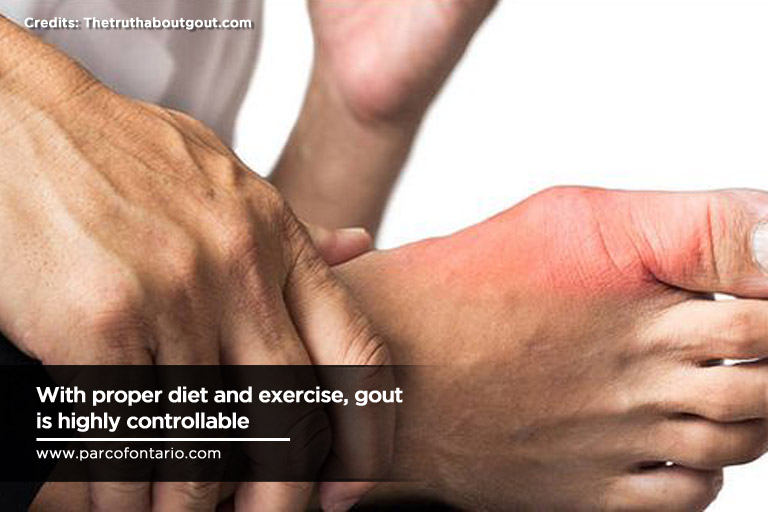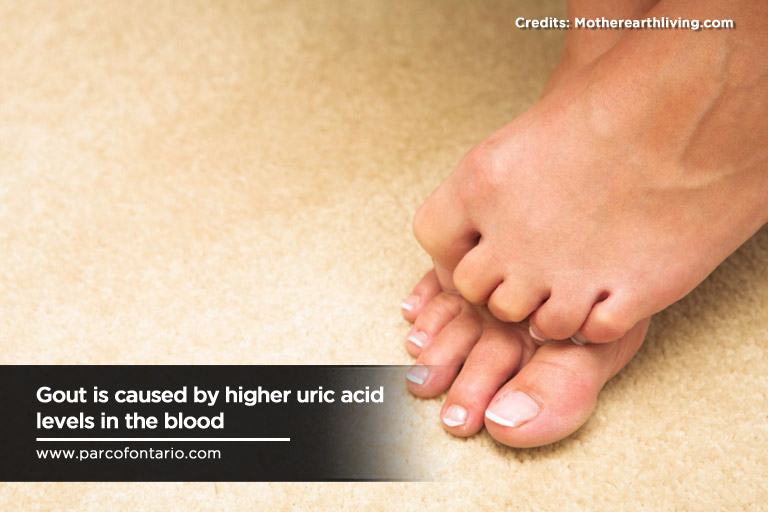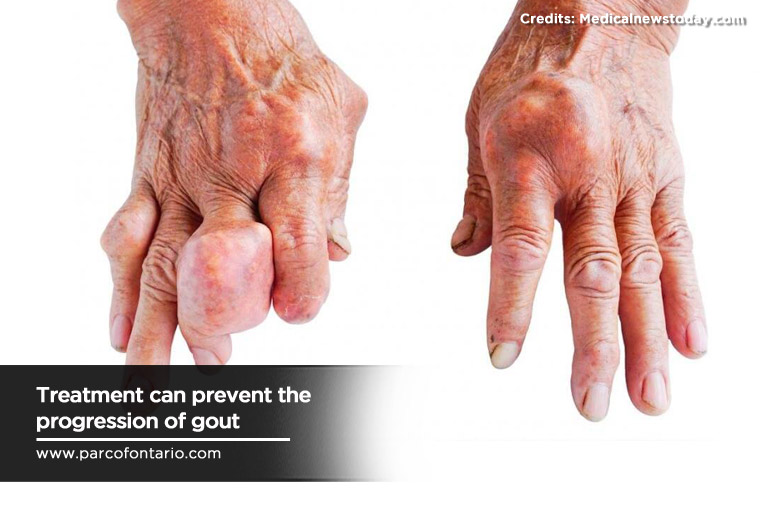
Text Neck: Causes, Symptoms, and Prevention
Many of us spend long hours hunching over our electronic mobile devices and laptops. As we spend more time texting, browsing social media, and reading on our devices, this constant downward gaze…
Read More

Gout is a commonly-experienced form of inflammatory arthritis for many people around the globe. An estimated three percent of Canadian adults have suffered from gout in their lifetimes. Both men and women can develop this disease; however, studies suggest that men 63 and above are at a higher risk of developing gout than women. The instance of gout has significantly increased over the last decade in Canada.
In this article, we will learn more about gout and how men and women can prevent this disease as they advance in years.

Gout develops when there are high uric acid levels in the blood (also called hyperuricemia). As a result, tiny crystals of uric acid form and accumulate in the joints. Gout causes mild to severe joint pain and redness and swelling in the toes.
The production of uric acid takes place when the body breaks down chemicals that naturally occur in the cells and in certain foods that are rich in protein. The blood takes and stores the uric acid to the kidneys until it is disposed of through the urine.
An excessive amount of uric acid in the bloodstream results in the formation of small crystals in the joints. Eventually, these crystals can build up underneath the skin and create hard bumps known as tophi. These acid crystals can also develop in the kidneys and later on become kidney stones.
Uric acid concentration is influenced by the following factors:

While there may be a genetic predisposition to gout in some individuals, gout is primarily triggered by lifestyle factors. These risk factors include:

Gout often attacks the base of the big toe, the joints, or the lower limbs (knees, feet, and ankles). Gout symptoms can flare up and disappear quickly. Initial flares may last between three to ten days and may recur (and last longer) without treatment. When left untreated, recurring attacks can permanently damage the joints, so early diagnosis and proper treatment is critical.
Common symptoms of gout:

There are four different forms of gout. Frequently, gout can progress from a less severe stage to a more severe form if it is left untreated.
If you find yourself in any of these stages, consult a doctor right away for an accurate gout diagnosis. A reliable rheumatologist in Ontario has the expertise and tools to diagnose, cure, and manage gout, even when it is at its complex stage.
One of the ways rheumatologists do this is by sampling out fluid from your joint and examining it under a microscope to detect the presence of uric acid crystals. This test is necessary because there are certain medical conditions with similar symptoms to gout, like pseudogout (another type of arthritis triggered by the calcium deposits in the joints), and prevent misdiagnosis.
In addition to clinical tests, your rheumatologist will also ask you about your diet and medications. They will trace when your symptoms started showing, how long your flares last, their intensity, and which joints are affected.

A huge part of managing your symptoms is by committing to a lifestyle change. Here are a few ways to implement these changes:
Gout is a highly controllable form of arthritis. With proper diet, medication, exercise, and help from healthcare professionals, you can regain your mobility and improve the quality of your life even in the face of gout attacks.
Here at Physiotherapy and Rehabilitation Centers of Ontario, we offer rheumatologist assessments and much more to help you prevent or heal from gout. We look forward to helping you.